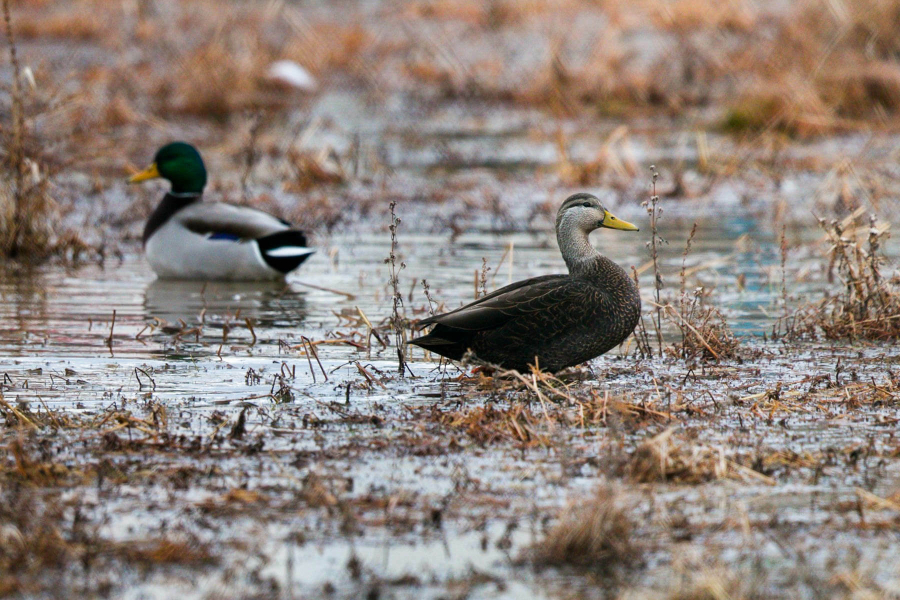Maximizing a short supply of black duck habitat

Each year, thousands of black ducks swoop down to the Chesapeake Bay looking for marsh and wetlands to use as their winter home.
Our region has hosted these migrating waterfowl for centuries. But these days, there is less room for them to make their habitat. Housing and commercial developments built on or near wetlands have seized valuable territory, while land along the Bay’s shore is being lost due to sea level rise.
With such limited real estate for black ducks to choose from, it’s imperative that resource managers throughout the Chesapeake Bay watershed maximize existing habitat. This has been a majority focus of the Chesapeake Bay Program’s Black Duck Action Team, a group of biologists, geological survey analysts and wildlife managers working through the partnership.
In order for an area to support black duck, there needs to be a sufficient amount of food (mostly bay grasses, aquatic plants and small invertebrates). In 2020, the United States Geological Survey (USGS), a member of the action team, estimated food availability in five types of wetland habitats used by overwintering black ducks: subtidal, fresh water, high marsh, low marsh and mudflat. The USGS study also estimated the amount of energy a black duck has to expend in order to obtain food in these areas, which helps to determine the overall habitat value.
But just because habitat is available now doesn’t mean it will be in the future. Climate change has caused sea levels to rise, which, when combined with natural land subsidence, increases the water level within the Chesapeake Bay. The region has some of the fastest rising water in the country—causing sunny-day floods in coastal cities, the loss of island communities and the inland migration of wetlands.
To account for these changes, the USGS developed a habitat vulnerability tool that projects the effects of sea level rise. Switching between the year 2017 and 2025, 2050, 2075 and 2100, you can see high marsh turn to low marsh and low marsh and mud flats disappear into the water. The tool also has a Projected Development Pressure tab that shows areas where future residential and commercial development is expected to take away even more habitat for waterfowl.
With this data, the Black Duck Action Team can work in concert with groups like the Chesapeake Bay Program’s Wetlands Workgroup. The Wetlands Workgroup’s goal is to restore, create or enhance wetlands, though as a member of the Chesapeake Bay Program, they also consider other goals of the partnership, such as climate resiliency, clean water, land protection and—you guessed it—black duck habitat.
The ultimate goal for the Black Duck Action Team is to restore, enhance and preserve wetland habitats that support a wintering population of 100,000 black ducks. This is an outcome of the Chesapeake Bay Watershed Agreement, the guiding document of the Chesapeake Bay Program.
Want to support black ducks and other Chesapeake Bay waterfowl? Visit our Tips and Tricks page to learn how to reduce water pollution from your home and yard.

Comments
There are no comments.
Thank you!
Your comment has been received. Before it can be published, the comment will be reviewed by our team to ensure it adheres with our rules of engagement.
Back to recent stories